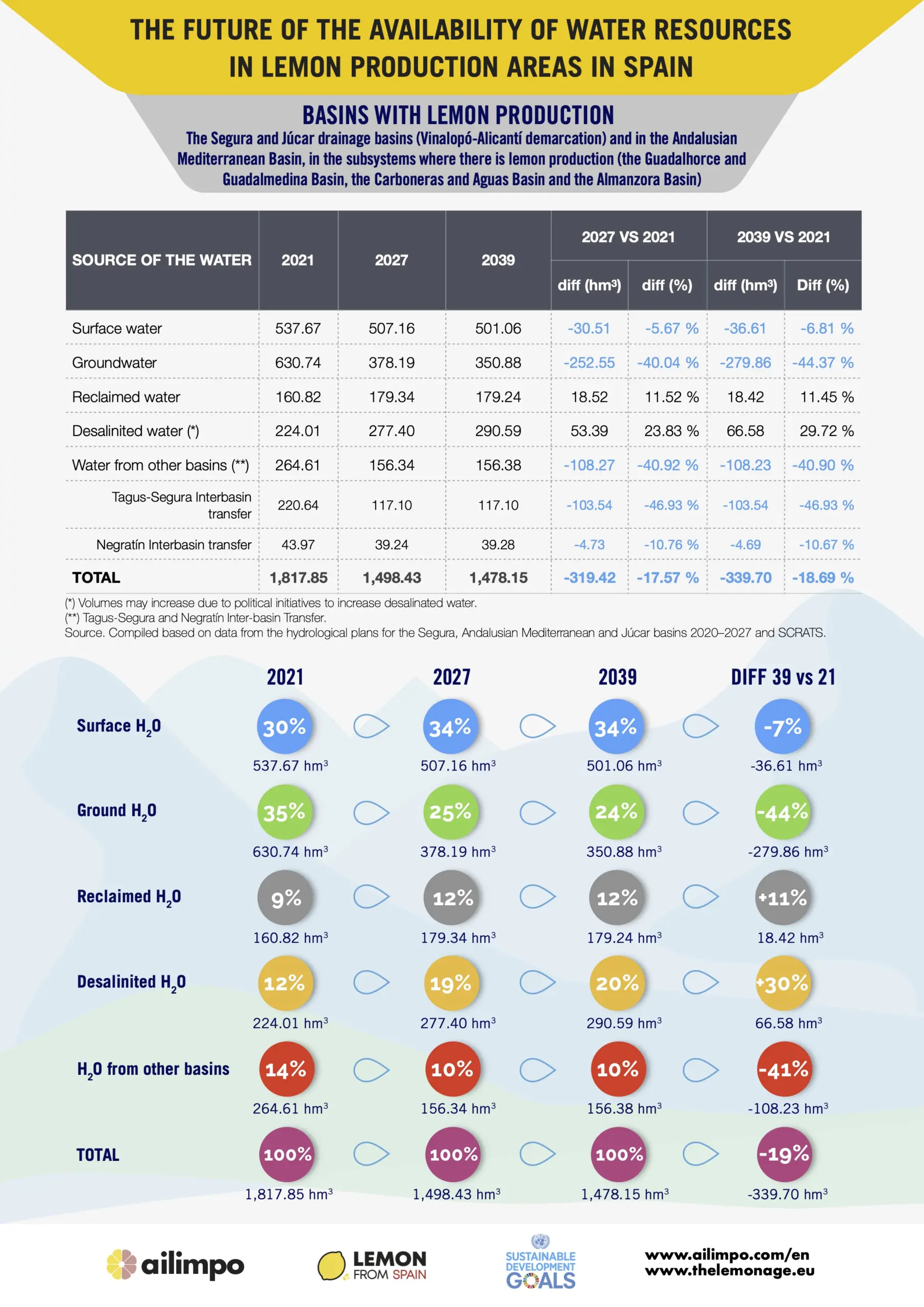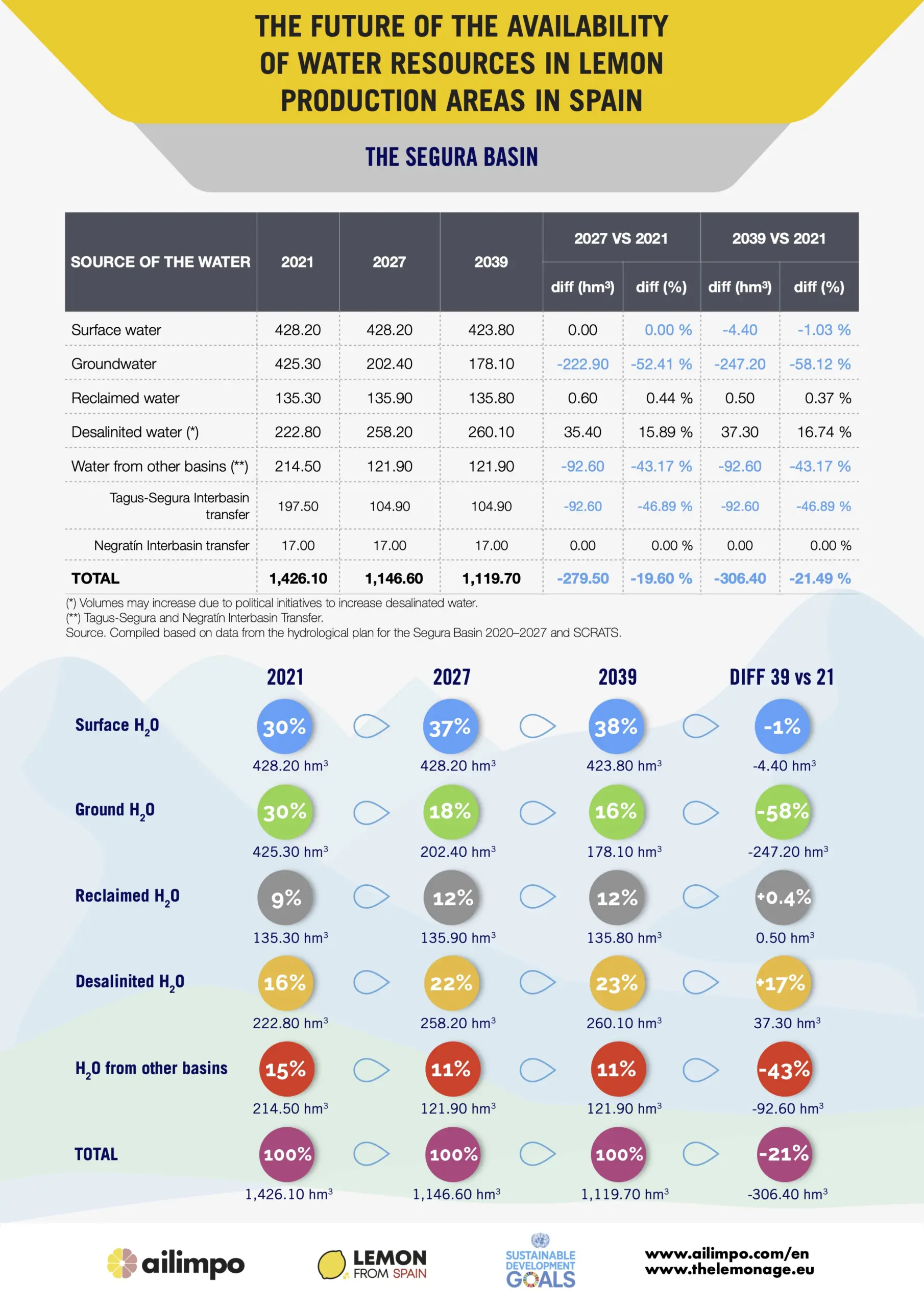
Lemon and Water
The Future of the availability of water resources in lemon production areas in Spain
The availability of irrigation water in lemon-producing drainage basins could decrease by 17.57% by 2027 and 18.69% by 2039 as a result of there being less groundwater and water coming from the Tagus-Segura interbasin transfer.
In the Segura basin, which is the main basin where lemons are produced, on 41,100 hectares (81.5% of Spain’s total production), the situation is similar, with water availability decreasing by 19.60% by 2027 and 21.49% by 2039, affecting production not only of lemons but also of other fruits and vegetables.
Faced with a scenario of reduced water resources, we can expect the first impact to most severely affect the production of seasonal crops (vegetables), especially perennial crops (fruit and citrus) since the effects of a lack of water may have an irreversible effect on trees, even leading to their death.
The basin plans contemplate an increase in the availability of desalinated water for future scenarios and, regardless of the planning schemes, on paper, there are political commitments to increase the volumes of desalinated water and lower its cost in order to reduce the water deficit in these basins.
Furthermore, even without knowing exactly what the real scope of the reduction in irrigation resources in these drainage basins will be, lemon producers are taking action to improve how water is used and reduce consumption to be prepared for the worst scenarios.


Resilience to Climate Change
The Segura River Basin is the territory whose waters drain into the Segura River, which runs through the southeast of the Iberian Peninsula and flows into the Mediterranean Sea. In this territory, 34,000 ha of lemons are cultivated (73% of the national surface area). Of this area, 25,000 ha are in the Region of Murcia (73.5% of the lemon area of the basin). In the Segura basin, rainfall is scarce and the distribution of rainfall is irregular
AILIMPO has prepared a report where it analyses the use of water in the production of lemons in this area and highlights the resilience of this activity in the face of climate change. This report details the different sources of water supply, their historical evolution and future forecasts. At the same time, it describes the strategy to optimize and make efficient use of water in lemon cultivation through localized irrigation, and innovations to reduce water consumption such as controlled deficit irrigation, the use of soil moisture monitoring tools, and the installation of plastic mulching on the soil or covers for irrigation ponds.
According to FAO, improvements in water management and agricultural practices are needed to reduce the risks of water scarcity and improve crop yields.
The lemon sector has made significant efforts in recent years to optimise and reduce water consumption. The increase in the area with localized irrigation in lemons has been 268% in the last 30 years. These advances in irrigation and fertilization have managed to increase the productivity of the lemon crop by 274%. Today, 1 kg of lemons are produced using 63% less water than in 1988.
In short, the lemon sector has been adapting for years to the lack of availability of water resources, having alternative sources of water to those coming from rain (treated wastewater and desalinated water) as well as implementing technologies to reduce water consumption and to avoid evaporation.
Therefore, we are prepared for a scenario of decreased rainfall as a consequence of climate change.
